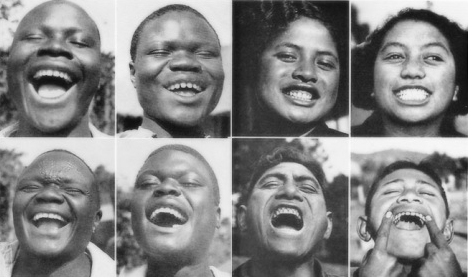Dr Weston Price: Snapshots of Westernization

Here’s an excerpt from Wheat Belly Total Health, some reflections on the fascinating observations made by Dr. Weston Price and the relationship of diet and dental health.
Dr. Price’s priceless observations are consistent with what anthropologists have been telling us for years: prior to adding grains to the human dietary experience, tooth decay was uncommon–despite the lack of any modern notions of dental hygiene. Armed with little more than a twig to pick the remains of wild boar from between the teeth, primitive people enjoyed a lifetime of intact, decay-free teeth without the assistance of their neighborhood dentist, orthodontist, or any of the other modern trappings of dental care.
Dr Weston Price was a dentist practicing in Cleveland, Ohio, during the early 20th century. He was troubled by the amount of tooth decay he witnessed in his patients, particularly children, and intrigued by reports that ‘savages’ (people living in primitive settings) were virtually free of tooth problems. So Dr Price did something extraordinary: he left his home and, along with his wife, Florence, began a 10-year worldwide journey to chronicle the dietary habits of primitive cultures, documenting his findings with careful examinations of teeth, facial structure and more than 15,000 photographs. His efforts provide a remarkable visual record of what primitive cultures looked like and what happens to primitive humans when they begin to consume modern foods.
His travels took him to the Inuits of Alaska, the native Americans of the Pacific Northwest and central Canada, Melanesians and Polynesians, Aborigines of Australia, the Maori of New Zealand, descendants of the ancient Chimú culture in coastal Peru, and tribes of Africa, including Maasai, Kikuyu, Wakamba, Jalou, Muhima, Pygmies, Baitu and Dinkas. In each locale, he examined and photographed teeth, faces and other features he found interesting. In short, Dr Price produced a fascinating record of people living their traditional lifestyles at a moment in time when it was all about to end.
In every culture of the dozens he studied–-without exception–-he found tooth decay, tooth loss and dental abscesses or infections to be uncommon, typically affecting no more than 1 to 3 per cent (and sometimes none) of the teeth he examined. He also noted the absence of gingivitis and periodontitis, and few to no crooked or crowded teeth. While a keeper of meticulous records, he also observed that facial structure was different, with primitive people enjoying what he called ‘fully formed facial and dental arches’ and a lack of narrowed nasal passages.
Even more remarkably, Dr Price specifically sought out members of these cultures who had recently transitioned to consuming ‘white man’s food’-–people who were bartering for the breads, pastries and sweets of Westerners visiting or bordering their land. In every instance, he observed an astounding increase in tooth decay, affecting 25% to 50% of teeth examined, along with gingivitis, periodontitis, tooth loss, infectious abscesses, crooked and crowded teeth, and reductions in the size of the maxillary (mid-facial) bone and mandible (jawbone). Nearly toothless mouths in teenagers and young adults were not uncommon.
The traditional diets of these societies were typically fish, shellfish and kelp among coastal cultures, and animal flesh and organs, raw dairy products, edible plants, nuts, mushrooms and insects among inland cultures. With only two exceptions (the Lötschental Valley Swiss, isolated by the Alps, who consumed a coarse rye bread, and the Gaelic people of the islands of the Outer Hebrides, who consumed crude oats), grains, sugars and processed foods were notably absent. (The Swiss had an intermediate number of dental caries, more than other cultures studied, while the Gaelic population did not.)

What is even more startling about Dr Price’s observations of the rarity of tooth decay and deformity is that none of these cultures practiced any sort of dental hygiene: no toothbrushes, no toothpaste, no fluoridated water, no dental floss and no dentists or orthodontists. While Dr Price’s observations cannot be used to precisely pinpoint the nutritional distinctions between modern and traditional cultures, they nonetheless make a powerful point. Anyone wishing to read Dr Price’s account can find it reproduced in a recent reprint.
The post Dr Weston Price: Snapshots of Westernization appeared first on Dr. William Davis.
Dr. Davis Infinite Health Blog
Recognize that this i The insights and strategies you can learn about in Dr. Davis' Infinite Health Blog are those that you can put to work to regain magnificent health, slenderness, and youthfulness.
Recognize that this is NOT what your doctor or the healthcare system provides, as they are mostly interested in dispensing pharmaceuticals and procedures to generate revenues. The healthcare INDUSTRY is not concerned with health--you must therefore take the reins yourself.
Dr. Davis focuses on:
--Real, powerful nutritional strategies
--Addresing nutrient deficiencies unique to modern lifestyles
--Deep insights into rebuilding the microbiome disrupted by so many modern factors
Follow Dr. Davis here and on social media and you can witness the extraordinary successes people enjoy on his programs. ...more
- William Davis's profile
- 159 followers



